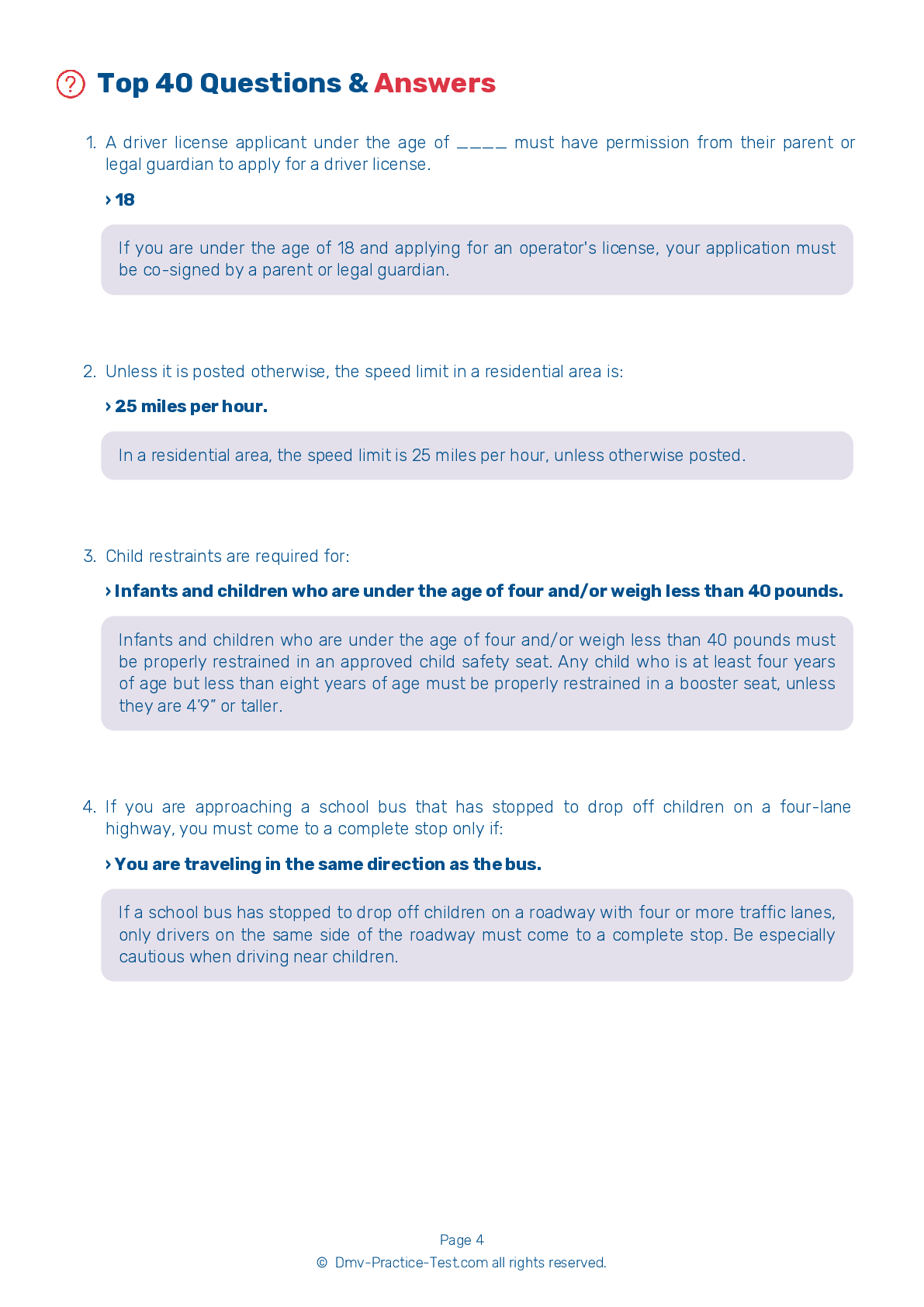FREE Ohio DMV Practice Test #9
The practise exams for Ohio's DMV have been revised for January 2025. It comprises questions based on the most important traffic signals and laws for 2025 from the Ohio Driver Handbook. To study for the DMV driving permit test and driver's licence exam, use actual questions that are very similar (often identical!) to the DMV driving permit test and driver's licence exam.
Each question on the practise exam has a tip and explanation to help you recall the ideas. Questions about traffic rules, traffic signs, and driving statutes, as well as knowledge from the Driver Handbook, will be included in the written portion of the official Ohio DMV test.
You must properly answer 35 of the 40 questions to receive a passing mark. To help you prepare for your instruction permit or driver's licence, take this practise test from the Ohio Department of Motor Vehicles.
The DMV exam is offered in a variety of languages.
Using any form of testing help will result in an automatic fail, and the DMV may take further action against your driver's licence, so avoid it.
1 . You should signal to turn ____ before beginning your turn.
When you wish to change lanes or make a turn, signal to inform other motorists of your intention. Signals should be activated at least 100 feet before you make the turn. Continue signaling until you have completed the turn or lane change.
2 . A license will be suspended if a driver:
If a driver is arrested for Operating a Vehicle While Impaired (OVI) but they refuse to take a chemical test when requested by an officer, their license may be suspended for one to five years. This suspension is in addition to any penalties that may occur if the driver is convicted of an OVI.
3 . Unless it is posted otherwise, the speed limit in a residential area is:
In a residential area, the speed limit is 25 miles per hour, unless otherwise posted.
4 . When changing lanes on a highway, you should:
Any time you want to change lanes, you should properly signal your intentions well in advance, check your mirrors, and check your blind spot. You can check your blind spot by glancing over your shoulder in the direction that you plan to move.
5 . When in a travel lane on the roadway:
You should not stop in a travel lane for any reason. Instead, keep moving until you can safely pull off of the road. If you miss your turn or exit, do not back up. Go to the next turn or exit or where you can safely turn around.
7 . This sign means:

This sign indicates that there is a flagger ahead controlling traffic in a construction area.
8 . Before switching on the ignition, you should:
Develop a routine for entering and leaving your car. Before switching on the ignition, buckle your safety belt and see that all passengers do likewise.
See the exact questions that will be on the 2025 Ohio DMV exam.
99.2% of people who use the cheat sheet pass the FIRST TIME
LT gives us an insight on how the cheat sheet provided her with all the study questions she needed before taking her test.
Joe initially studied with the handbook and failed his test, he eventually found us online, studied and pass his test the first time around.




